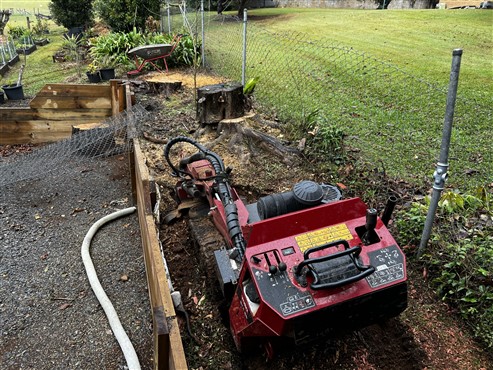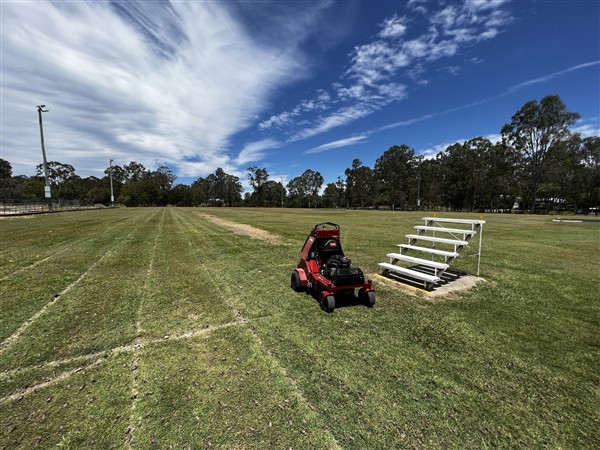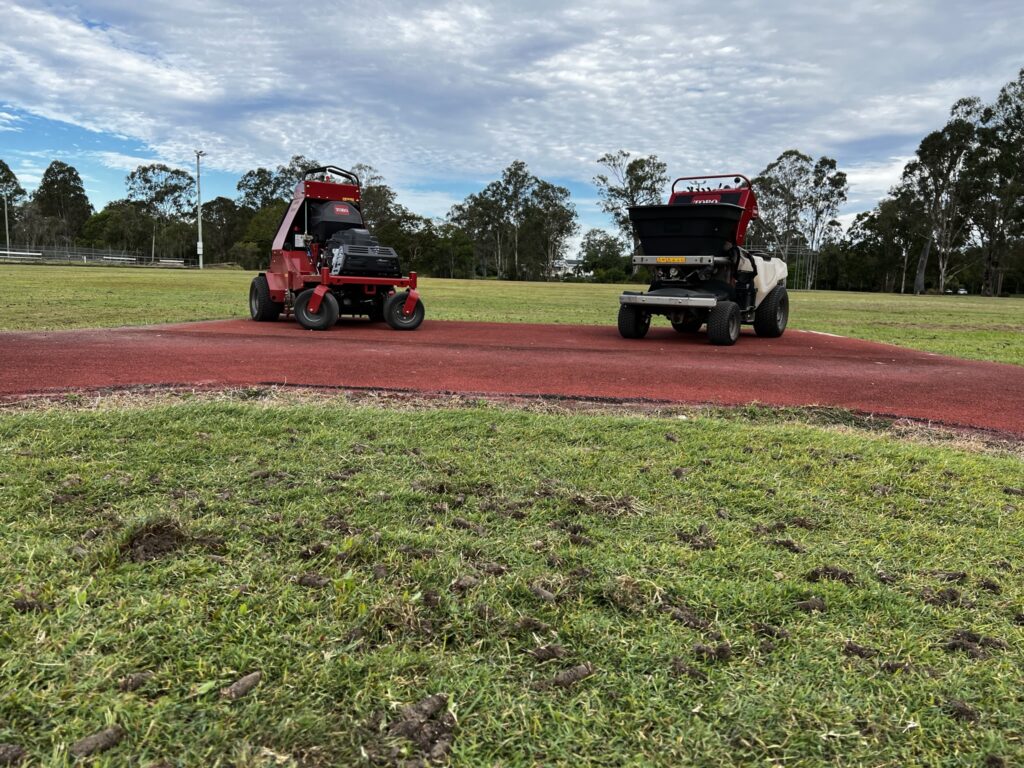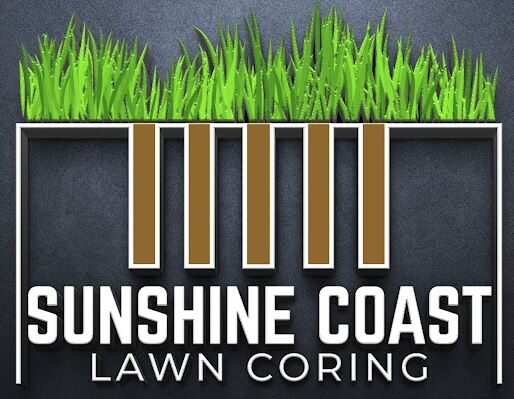Here’s a vibrant leap into the world of lawn care, focusing on one specific, yet vital tool that can work wonders on your lawn: the coring machine, or as it’s commonly known, the core aerator. This machine has a simple yet critical mission – to help your lawn breathe. But just as you don’t play a guitar without knowing a chord or two, using this instrument of greenery requires the right knowledge.
Why, do you ask? The interesting thing about core aerators is in the timing of their use. Just like how a well-timed joke can warm up a crowd, or timing your vegetables right can bring out their best flavours, selecting the right time for aeration has significant implications on your lawn’s health. A well-aerated lawn in optimal conditions can become the envy of your neighbourhood, displaying lush, green beauty that’s a joy to behold.

Components of a Coring Machine
Let’s dive into the heart of the coring machine: its components. Like any machine, the coring aerator is a sum of its parts, each playing a crucial role in its operation. A thorough understanding of these components will demystify lawn aeration, turning it from a potentially daunting task into a manageable, even enjoyable one.
Overview of the Key Parts
To begin with, let’s delve into an overview of the essential sections that make up a coring machine:
- Tines or Spoons: Make no mistake – these are not your commonplace kitchen spoons. Tines are the sharp, cylindrical parts that pierce the ground and extract soil cores from your lawn. The hollow shape ensures that tines remove and relocate soil without compacting it further, promoting better absorption of nutrients, water, and air.
- Wheels and Frame: The frame houses the machine’s vital parts and provides structure, while the wheels enable movement. The design, usually sturdy and ergonomic, allows for smooth manoeuvrability across your lawn, ensuring even distribution of aeration.
- Depth Adjustment Mechanisms: Just like a good handshake is neither too limp nor too firm, the tines of an aerator need to strike the right balance in depth. That’s where the depth adjustment mechanisms come into play, allowing for precise control over how deep the tines penetrate the soil, critical for accommodating different types of turf and soil.
- Collection System (Optional): Some coring machines come equipped with a collection system to gather and dispose of the removed soil plugs. While not a mandatory feature, it certainly lends a hand in maintaining cleanliness and streamlining the lawn aerating process.
With a good understanding of these key parts, you’ll find it much easier to operate a lawn coring machine and even troubleshoot minor issues when they arise.
How Each Component Contributes to the Aeration Process
Building on our knowledge of the core components, let’s dig deeper into how each part significantly adds to the aeration process:
- Role of Tines or Spoons: These are the heart of the operation. With each rotation, the tines dig into the soil, extracting small, cylindrical cores of lawn and soil; hence the name ‘coring’ machine. By creating these seemingly small punctures across your lawn, tines facilitate improved air circulation, and enhanced water and nutrient penetration, paving the way for robust, healthier turf.
- Role of Wheels and Frame: As firm as a backbone, the frame lends structure and stability to the aerator, enabling steady navigation across your lawn. The wheels, on the other hand, ensure smooth movement of the machine. The interaction between the wheels and frame is crucial in ensuring that the tines cover the lawn surface evenly, guaranteeing thorough treatment.
- Role of Depth Adjustment Mechanisms: This component allows you to fine-tune the extent of soil penetration by the tines. By adjusting the depth, you can cater to different soil types and conditions – looser soil may require less depth while more compact soil may require more. Ultimately, the depth adjustment mechanisms ensure that your lawn gets the most beneficial aeration without causing unnecessary damage.
- Role of Collection System: If present, this system is like your cleanup crew. As the machine proceeds with the aeration, the collection system gathers the displaced soil cores, keeping your lawn tidy. This also prepares your lawn for any aftermath procedures like top dressing or seeding as there is no detritus preventing direct contact between soil and supplement.
Each component of a coring machine is designed with the sole purpose of making your lawn healthier. Their functions elegantly interact to ensure an efficient and effective aeration process.
The Coring Process: Step by Step

1. Preparing the Coring Machine
Setting the stage right for the main event, the aeration process begins with preparing your coring machine. This initial stage is just as crucial as the process itself, ensuring that your machine is primed and ready for duty. Let’s break it down:
Checking Equipment Condition
Just as you’d inspect your car before a long drive, examine your coring machine before commencing aeration. Check the tines for any visible signs of wear and tear; they should be in good shape for effective soil extraction. Ensure that the wheels are properly inflated and functioning smoothly for effortless manoeuvrability. And lastly, if your unit comes with a collection system, make certain it’s clean and ready to accommodate the soil cores that will be extracted.
Setting the Desired Core Depth
The next essential step is to set the correct core depth using the depth adjustment mechanism. This is where insight into your lawn is beneficial. For most typical lawns, a depth of 2-3 inches is generally suitable. However, if you’re dealing with compacted soil or have identified a specific need for deeper aeration, a greater depth may be needed. Set your machine accordingly.
Taking the time to properly prepare your coring machine will not only ensure a smoother aeration process but also contribute to the longevity of your equipment. So, before pulling the starting trigger, double-check if your machine is prepped and primed for the coring task ahead.
2. Operating the Machine
With your coring machine checked and set up, you’re ready to dive into the actual aeration process – operating the machine. It’s not as daunting as you might think. Similar to driving a lawnmower, it involves moving methodically across your lawn. The following steps will guide you on what to expect:
Forward Movement across the Lawn
The first step is to position your coring machine at one end of your lawn. Power it up and gently push it forward in an even, straight line, making sure not to rush. Speed is not the goal here, but rather a consistent aeration across the entire lawn. Continue to walk behind your machine, guiding it for even distribution.
Penetration of Tines into the Soil
As you move the machine, the tines embedded in the coring machine come into play. These will automatically drive into the soil on each rotation, thanks to the depth you’ve set ahead of time. In this manner, they will replicate a pattern similar to stitching across your lawn – mechanically entering and exiting the ground at consistent intervals.
Extraction of Soil Cores
One of the key aspects while operating the machine is the extraction of soil cores. As the tines penetrate the soil, they’ll extract small plugs or ‘cores,’ and release them onto the lawn surface. If your machine comes equipped with a collection system, this will pick up these cores, keeping your lawn tidy during the process.
Operating the machine effectively ensures the uniform aeration that will enhance lawn health. It requires some practice to master the process, but once you do, it’s akin to a walk in the park – or rather, a walk across your lawn.
3. Explaining the Collection System (If Present)
If your coring machine is equipped with a collection system, it adds an additional layer of convenience to the process. This system is solely designed to handle the soil cores generated during aeration. Let’s see how it functions and what you can do with the collected soil cores.
Bagging or Mulching the Soil Cores
The collection system usually includes a bagging mechanism. As the machine operates and tines remove cores from your lawn, the system collects these soil plugs, efficiently preventing them from being scattered all over your lawn. Some collection systems also have the ability to mulch the cores, breaking them down into smaller pieces facilitating faster decomposition.
Disposal or Recycling Options
Once the bag or collector is filled with plugs, you have a few options. The simplest one is to dispose of the soil cores, but that usually isn’t the best choice. These cores are nutrient-rich and can be reincorporated into your lawn, serving as sought-after organic matter. You can spread them back evenly across your yard or use them as compost in your garden. Another option, if you choose to mulch the cores, is to leave the mulched soil on your lawn, which will decompose naturally over time, enriching the soil with vital nutrients.
The collection system in a coring machine may somewhat be the unsung hero of the aeration process. By keeping your lawn neat throughout the process and providing you with quality organic material, it plays a vital part in ensuring your lawn’s legacy flourishes.

Revitalise Your Lawn with Sunshine Coast Lawn Coring
Don’t let compacted soil hold your garden hostage. Choose Sunshine Coast Lawn Coring, where our expert knowledge and state-of-the-art equipment come together to breathe new life into your lawn. Say goodbye to lacklustre turf and hello to lush, vibrant grass with our professional coring services.
Unlock the full potential of your treasured green spaces – connect with us today!
